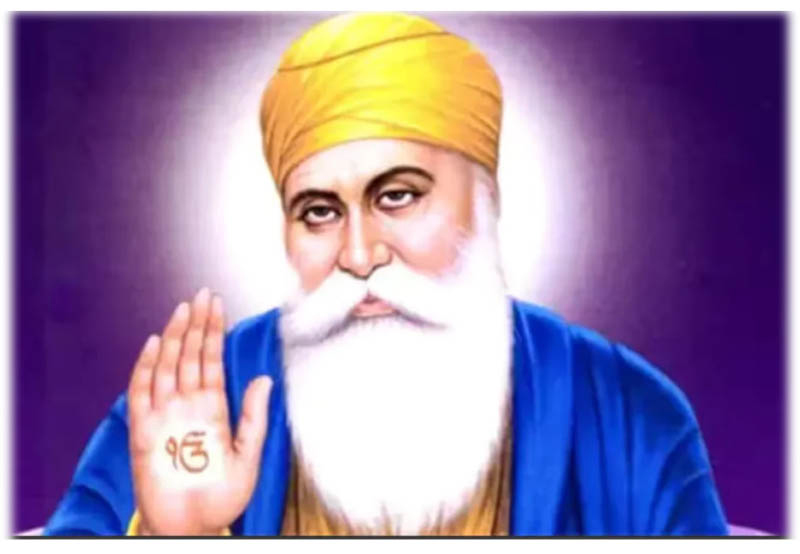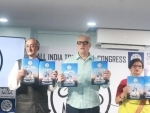 Sikhism
Sikhism Eternal Truth: The unfolding of Sikhism through Sri Guru Nanak Dev Ji
Sri Guru Nanak Dev ji is regarded as a Messenger of God, an enlightened Teacher, a champion of human dignity and peace, and the most brilliant spiritual light for humanity, irrespective of caste, creed, or religion.
“Sut Guru Nanak Purgattiya, Mittee Dhund Jugg Channan Hoya.”
(A divine teacher Nanak has taken holy birth; a great fog has lifted, and the world is bathed in divine light).
The founder and first Guru of Sikhism, Guru Nanak, was born in 1469 at Nankana Sahib, near Lahore (now in Pakistan). His birthday is celebrated with vigor and festivities in early November each year. ‘Prakash Diwas’, as it is popularly called, is deemed to be the most auspicious day of the Sikh calendar because it is believed that along with having been born on the full moon night of ‘Kattak’ (November) month, he also ‘obtained omniscience’ on the same day. Lakhs of pilgrims gather at the Nankana Sahib Gurudwara on this day and the ‘Ragis’ (singers of religious hymns) sing hauntingly rich renditions of hymns, such as the one mentioned above, written by Bhai Gurdas. Around midnight, the time of the Guru’s birth, one can almost witness a celestial light descend in the ‘Janam Asthan’ (place of birth). The heart and soul of his devotees are swept away by this indescribable spiritual exultation. These treasured experiences and memories are shared nostalgically by the older generation of Sikhs as now the annual pilgrimage to Nankana Sahib is not possible due to the borders that separate India and Pakistan.
“Ik Onkar Satnam”, three words containing the universal truth. There is but one God. This line is the essence of Sikhism and the core of Guru Nanak’s teachings. Before he merged with the Divine (1539), his name and teachings spread not only across India but traveled as far as Arabia, Mesopotamia (now Iraq), Ceylon (Sri Lanka), Afghanistan, Burma, Tibet, and Turkey.
A unique calm transcends over a person merely by a glimpse of his image, I often wonder how people who actually experienced his physical presence might have felt! Did they feel enlightened? Or spiritually cleansed? It is no surprise that such was the aura of this holy man that all subsequent Gurus came to be known as ‘Nank’, for example, the second Sikh Guru, Guru Angad is also referred to as ‘second Nanak’ or ‘Nanak II”.
Although Nanak Devji had an interest and inclination towards divinity from as early as the age of five, it was around 1499, when he was 30 years old, that he had his first vision. It is said that his clothes were found on the bank of a local stream, ‘Kali Bein’ as he did not return from his ablutions, it was assumed that he had drowned. The river was dragged but no body was found. The miracle occurred three days later! Guru Nanak reappeared but remained silent. The next day he announced; “There is neither Hindu nor Mussulman so whose path Shall I follow? I shall follow God’s path. God is neither Hindu non-Mussulman and the path which I follow is God’s.”
Nanak is said to have said that he had been taken to God’s court where he had been given a cup filled with ‘Amrit’ and had been commanded;
“This is the cup of the adoration of God’s name. Drink it. I am with you. I bless you and raise you up. Whoever remembers you will enjoy my favors. Go, rejoice in my name, and teach others to do so. I have bestowed the gift of my name upon you. Let this be your calling”.
And Sikhism was born! Henceforth, Nanak was addressed as Guru. We are well aware of his teachings and emphasis on ‘Sewa’ and ‘Vand Chakko’ (sharing and helping those in need), ‘Kirat Karo’ (living honestly), and ‘Naam Japna’ (meditating on God’s name). These are the pillars of Sikhism.
‘Japji Sahib’ is a designated daily prayer and meditation for Sikhs. It is a sacred composition in which Nanak Devji introduces us to nature and the magnificence of God and reveals ways to understand and enhance our relationship with God. Even today, five hundred years later, his messages remain universal and relevant. The prayer ends with the sacred benediction:
“In Your Name, by Your Grace, may there be exuberant spirit, and goodwill among your entire creation.”
Guru Nanak Devji traveled widely. He is acknowledged to have made four major journeys, spanning thousands of kilometers, firstly to the east of India, Bengal, and Assam. The second was towards Sri Lanka, the third towards the North, Kashmir, Ladakh, and Tibet and the last one was to the West, covering Baghdad, Mecca and Madina (Arabian Peninsula). Nanak was moved by the plight of people across the world and wanted to give them the ‘real message of God.’ Most of his expeditions were made on foot with his companion Bhai Mardana, year 1499 onwards. His mission was the regeneration of humanity. He bore the torch of truth, love, peace, and joy wherever he visited. These travels are known as ‘Udasis’. The Sikh Guru was welcomed heartily everywhere he went and participated in robust discussions with religious scholars. He shared the message that all creation is the masterwork of One immaculate Reality that is benevolent towards all.
Today, Sikhism is the fifth largest religion in the world and has over 35 million followers spread globally. According to the great Guru, the word Sikh means a disciple, a life-long student, so he has to learn that each and every living being is the repository of the same Divine light and no distinctions should make one person holy and the other not worthy. Sikh. Scriptures like Guru Granth Sahib and Guru Nanak’s hymns are full of these teachings and more. He spoke fearlessly s against tyranny and injustice of rulers, the stranglehold of the prevailing caste system, and getting rid of burdensome superstitions.
Kartarpur (The city of God) was established by Nanak Devji in 1522. After appointing Bhai Lehna, renaming him as Guru Angad (meaning, a part of you), as successor Guru, Nanak became ‘Joti Joy’ or merged with God in 1539, in the city of Kartarpur, at the age of 70. However, since his followers were both Hindus and Muslims, a dispute arose about his last rites, wherein it was decided that both sects would place flowers on his body and the community whose flowers were found withered the next morning would lose the claim. The next morning was miraculous, as when the cloth covering his body was removed, the corpse had vanished leaving fresh flowers in its stead. Hence, both sects divided the sacred cloth and cremated him as per their own traditions. Therefore, both a ‘Samadh’ and a grave lie on the premises at Gurudwara in Kartarpur (Pakistan).
Let me end this story with some food for thought for us mortals. As the Guru himself said, “For each and every person, our Lord and Master provides sustenance. Why are you so afraid, O mind? The flamingos fly hundreds of miles, leaving their young ones behind. Who feeds them and who teaches them to feed themselves? Have you ever thought of this in your mind?”
(Image and Text credit: Khalsavox.com)
Support Our Journalism
We cannot do without you.. your contribution supports unbiased journalism
IBNS is not driven by any ism- not wokeism, not racism, not skewed secularism, not hyper right-wing or left liberal ideals, nor by any hardline religious beliefs or hyper nationalism. We want to serve you good old objective news, as they are. We do not judge or preach. We let people decide for themselves. We only try to present factual and well-sourced news.







